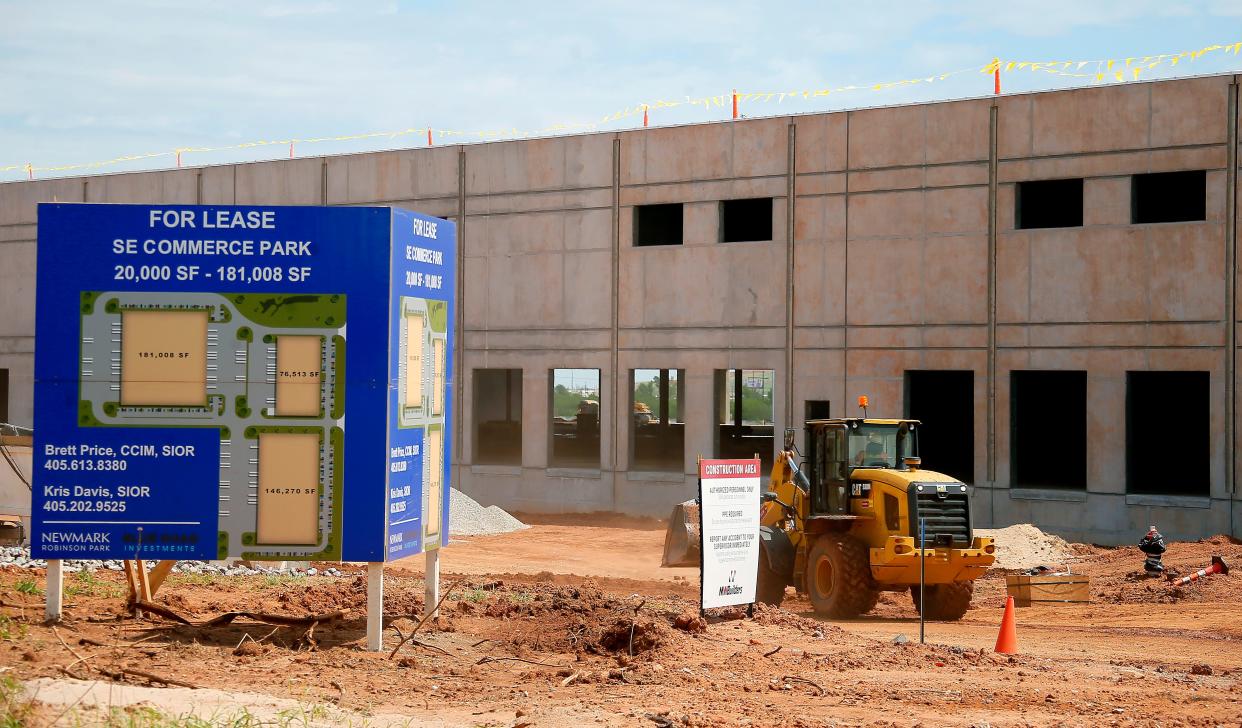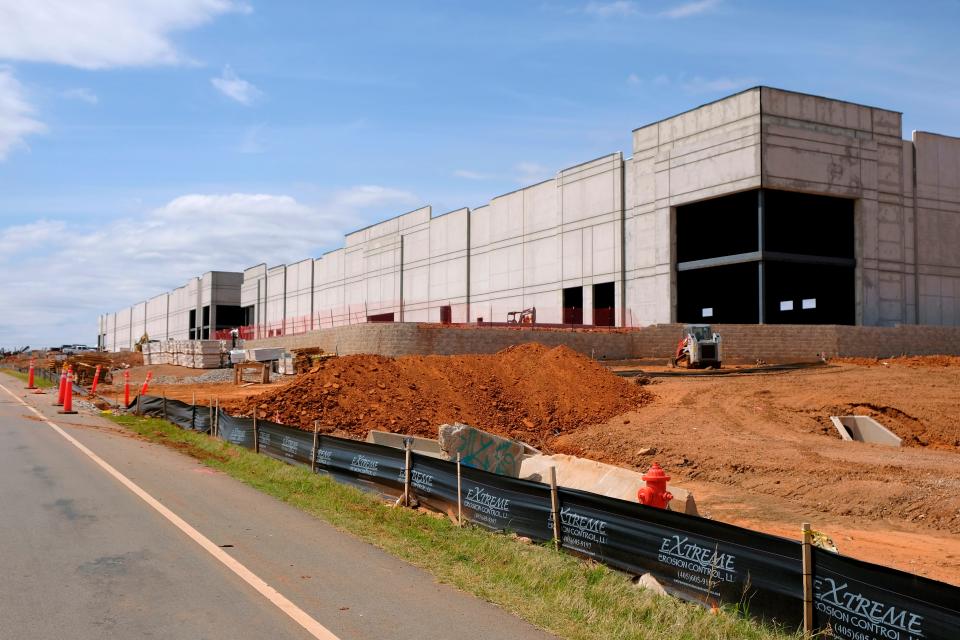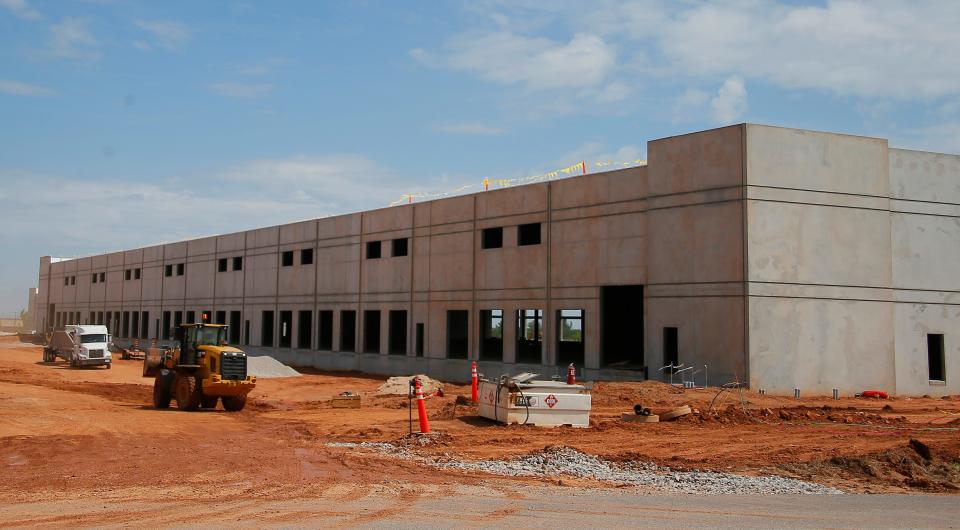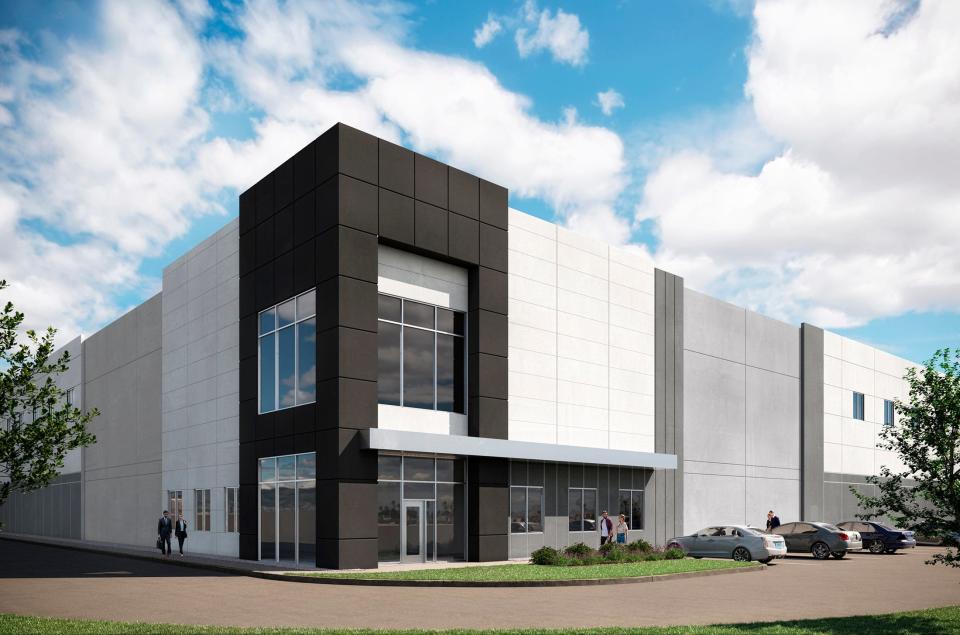Enough space for 58 football fields: Why industrial space continues to explode in Oklahoma

Another huge speculative industrial park has broken ground in Oklahoma, this one in Tulsa, and property brokers say neither war, pestilence, nor the usual bane of economic growth — rising interest rates — is likely to tamp down the building boom.
The boom is largely fueled by continued changes in the way people shop. Online retail, and demand for faster delivery times, keep growing.
Add to that the return of U.S. manufacturers back home, or at least back to North America, after a generation of offshoring. The challenges of COVID-19 and now the Russian war with Urkraine, have onshoring accelerating.
It's not a brand-new phenomenon. "Industrial is the next retail," CBRE Group broker Randy Lacey said here at a conference five years ago. The pandemic, and now war, threw fuel to the fire.
Developers are convinced that speculative construction — which means no tenants are lined up to lease the space beforehand — is worth the risk.
The most recent project is a big industrial park by VanTrust Real Estate LLC, a developer based in Kansas City, Missouri. The group just started Tulasi Commerce Park, with 684,616 square feet of space planned for two warehouses. It's being marketed by Newmark Robinson Park, a brokerage in Oklahoma City.
VanTrust joins developers in Kansas and Dallas in coming to Oklahoma to meet the booming demand for new industrial space.
It comes to a total of 2,784,616 square feet of new warehouses, in three developments, started in the past six months — equal to 58 football fields (not counting sidelines and end zones).
And that's not all.
In all, across the Oklahoma City area, about 3.8 million square feet of industrial space is in the pipeline, planned or under way, set to be delivered within the next 12 to 18 months, said Cody Beat, industrial broker with Price Edwards & Co.
About two-thirds of it is already pre-leased, he said. It's the speculative risk going into the rest that is so startling compared with the past.
Warehouse space keeps getting gobbled up. The first quarter saw these big leases in Oklahoma City:
• Cox Automotive signed a 387,000-square-foot lease at 6801 S Sunnylane Road.
• Nortek Air Solutions signed a 242,000-square-foot lease at the former in a Baker Hughes facility at 12701 N Santa Fe Ave.
• Real Value signed a 182,835-square-foot lease at the former General Electric Oil & Gas warehouse at 4600 SE 59.
• Locke Supply signed a 118,946-square-foot lease at 4249 SW 29.
"The list goes on and on," Beat said.
All the new warehouse space is turning Oklahoma City into a different kind of "Big League City" — an industrial one
The new space is the stuff of e-commerce and last-mile logistics, helping make sure the book, socks, office supplies, cat food or whatever you order today gets to you tomorrow.
It also means more places for business operations such as data centers, and that means jobs "first and foremost," which generate population growth, and grow the tax base "and ultimately our infrastructure and amenities," said Chris Zach, with CBRE.
"This attracts new companies who want to be here, and around and around we go," Zach said. "This is what we’ve seen with OKC more and more lately, which is why it has become such an attractive place to live and our KPIs (key performance indicators) have trended so well."
But in the big picture, for Oklahoma City, it means something else, Beat said. Oklahoma City is becoming a different kind of "Big League City" — an industrial big league city.
More: Take a peek at 5 Oklahoma City architectural wonders, and find out how you can get a tour
"With all the development occurring around the metro area, this is signaling a change in the way businesses look at our market," Beat said. "Given Oklahoma City’s geographical location and low cost of living/operating businesses, we are seeing investment from national and regional retailers and manufacturers.
"There are also a number of large, well-respected national developers planning significant projects here. The expectation is that Oklahoma City is poised to become a regional warehouse/industrial hub, which will serve to further diversify Oklahoma’s economy and stimulate job growth."

As the world turns, and turns upside down, industrial property needs churn
A lot has changed since the first big spec industrial park was announced last fall: fickle COVID-19 rising and falling, and now on the rise again, the war in Ukraine, and interest rates on the rise.
What has all of that meant for industrial property demand in Oklahoma?
"We still have a lot of distribution tenants looking for space, but the most notable change has been from manufacturing requirements," said Brett Price, senior managing director for industrial at Newmark Robinson Park. "There seems to be more manufacturing and data center companies looking for space over the past six months.
"Manufacturing buildings across the country are typically older and don’t have modern amenities. We are already seeing several new data centers announced around the country, and I think we will also see an increasing number of manufacture facilities in the near future."
The coronavirus is still changing things, and the war has sped up some trends, Price said.
"There has been an onshoring trend by companies since the start of COVID, and it has accelerated with the Russian invasion of Ukraine," he said. "Companies are increasingly looking to manufacture more products and store more finished goods in North America. This will result in job creation and also a more consistent supply chain for consumers."
Aging in place?: Here's how to keep parents, grandparents, and you, from raging in place
Demand for medical marijuana has burned out and cryptocurrency flashed and burned up available ready supply, Zach said.
"In the last year, the cannabis market reached a saturation point," Zach said, "really an oversaturation, so those prospective tenants have stopped calling.
"For a few months, there was a significant wave of cryptocurrency data miners flooding the market. With the incredible amount of power they take down, those first to market seemed to tie up much of the available electrical capacity for now, so the miners likely have turned elsewhere."
He added, "We’re still seeing a steady influx of e-commerce demand, especially for grocery and meal delivery service users, while traditional industries remain strong, like manufacturing and distribution, with oil and gas making a nice rebound as well."
Beat said e-commerce and logistics are still juicing the speculative boom, and "we expect this trend to continue indefinitely."

How will rising interest rates affect the industrial building boom in Oklahoma?
The rising cost of borrowing is a wild card.
"Rising interest rates are certainly something to monitor moving forward across all sectors of commercial development," Beat said. "But as it relates to the industrial market, we continue to see heavy interest regardless of rising rates.
"That may change over time depending on just how much the increase."
Zach said rising rates do make development harder.
"Interest rates directly affect real estate," Zach said. "As the cost of capital rises, so does the difficulty of making potential deals pencil. Returns tighten, decreasing the margin sellers and buyers have for coming to an agreement."
Fixed-rate loans get harder to come by, he said, and lenders start offering variable-rate loans as a hedge against inflation.
"We saw this happen recently with a local developer who ultimately opted to go with a second lender as the original one couldn’t offer them a fixed-rate loan for the desired term," Zach said. "This hasn’t really seemed to affect development levels yet, but increasing uncertainty may eventually start to give some players pause at some point."

Details about Tulasi Commerce Park, new warehouses, in Tulsa, Oklahoma
In Tulsa, VanTrust Real Estate has started $50 million Tulasi Commerce Park, with two buildings totaling 684,616 square feet on 44 acres, northeast of U.S. 75 and E 76th St. N, just north of Whirlpool Corp.
"Tulsa's industrial market has proven significant resilience to the global economic climate over the last few years, and we believe this development will help service Tulsa's growing requirements," said broker Collier Imgrund, of Newmark Robinson Park.
Tulsa, with vacancy averaging 3.6% and annual rental growth at 6.5%, "has been on our radar for a while," said Grant Harrison, senior director of development at VanTrust, in a news release from the firm.
Tulasi Commerce Park will have a 231,130-square-foot rear-load building and a 453,486-square-foot cross-dock building, meaning loading docks in front and back. Both will have modern, high clear ceiling heights, numerous dock and drive-in doors, and ample car, truck and trailer parking, Imgrund said.
In Oklahoma City, "the industrial market had an up and down first quarter to start 2022," kicking more than 770,000 square feet of less than ideal "Class B" space back onto the market, said Zac McQueen, of NAI Sullivan Group.
But the overall vacancy rate remained "very low" at 3%, which continued to drive rents to a record high of $7.83 per square foot per year on a triple-net basis, meaning tenants pay for insurance, property taxes, maintenance and utilities, McQueen wrote in a report.
Nationally, industrial real estate "continues to see record vacancy lows, limited supply, and what seems to be a never-ending growth of rental rates," he wrote, and Oklahoma City is reaping benefits.
Details about OKC Logistics Park, and Southeast Commerce Park, new warehouses in Oklahoma City
Previously recently announced speculative industrial parks in Oklahoma City are:
• OKC Logistics Park, by Flint Development in Kansas City, Kansas, and marketed by Newmark Robinson Park, at 2800 S Council Road in the heart of the city's southwest industrial sector. Previously, it was the longtime site of a Bridgestone/Firestone Dayton Tire factory.
The 1.7 million square feet of space for lease will be an expansion of the 1 million square feet already there, the reconfigured remnants of the tire factory.
OKC Logistics Park will have cross-dock facilities, with 312 dock doors; 16 drive-in doors; space to park 626 trailers; and parking for 1,024 cars, on 115 acres.
• Southeast Commerce Park, by Blue Road Investments in Dallas, also marketed by Newmark Robinson Park, at SE 89 and Pole Road.
Southeast Commerce Park will have a 180,000-square-foot, cross-dock facility, and two rear-load warehouses, one with 145,000 square feet and one with 77,000 square feet.
All will have 32-foot clear-height ceilings, ESFR (for "early detection fast response") sprinkler systems and 135-foot truck courts with ample trailer parking.
Senior Business Writer Richard Mize has covered housing, construction, commercial real estate, and related topics for the newspaper and Oklahoman.com since 1999. Contact him at rmize@oklahoman.com.
This article originally appeared on Oklahoman: Why the industrial warehouse building boom is good news for Oklahoma

